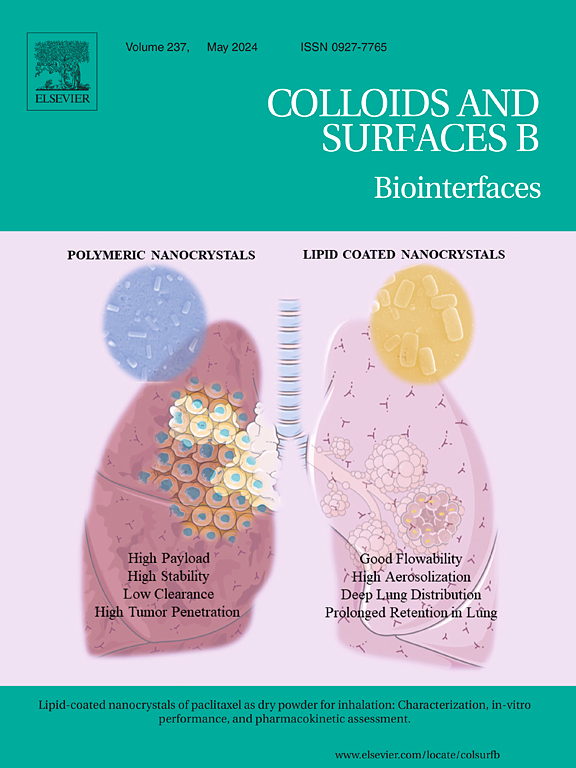Bright fluorescent biocompatible Magnozyme nanoclusters for brain-cell in-vivo live imaging
IF 5.4
2区 医学
Q1 BIOPHYSICS
引用次数: 0
Abstract
Multifluorescent, water-dispersible magnesium nanoclusters (Magnozyme) were obtained using a simple and economical synthesis procedure. The prepared particles were 4 nm in size, and they exhibited significant emission at 450, 545, and 628 nm with multiple excitations of 366,469 and 560 nm wavelengths. The prepared particle exhibited a maximum absolute quantum yield of 21.3, 6.8 % and 5 % in red, green and blue spectrum, respectively, with excellent photostability, good ionic strength tolerability, and broad-range pH stability. The prepared Magnozyme demonstrates 95 % cell viability in human glioma brain cell lines (U-87 MG) and can be used as a probe for cellular imaging. Furthermore, imaging with this brain cell revealed significant cytoplasmic accumulation in the red, green, and blue regions. The confocal Z-stack study revealed the presence of Magnozyme at a depth of the cellular level by capturing a series of images at different planer axes (z-axis). Furthermore, In-vivo toxicity assessments and in-vivo imaging in mice revealed the nontoxicity behavior of Magnozyme with their great staining ability in physiological conditions, confirming their candidature toward biological cell imaging/labeling purposes.
求助全文
约1分钟内获得全文
求助全文
来源期刊

Colloids and Surfaces B: Biointerfaces
生物-材料科学:生物材料
CiteScore
11.10
自引率
3.40%
发文量
730
审稿时长
42 days
期刊介绍:
Colloids and Surfaces B: Biointerfaces is an international journal devoted to fundamental and applied research on colloid and interfacial phenomena in relation to systems of biological origin, having particular relevance to the medical, pharmaceutical, biotechnological, food and cosmetic fields.
Submissions that: (1) deal solely with biological phenomena and do not describe the physico-chemical or colloid-chemical background and/or mechanism of the phenomena, and (2) deal solely with colloid/interfacial phenomena and do not have appropriate biological content or relevance, are outside the scope of the journal and will not be considered for publication.
The journal publishes regular research papers, reviews, short communications and invited perspective articles, called BioInterface Perspectives. The BioInterface Perspective provide researchers the opportunity to review their own work, as well as provide insight into the work of others that inspired and influenced the author. Regular articles should have a maximum total length of 6,000 words. In addition, a (combined) maximum of 8 normal-sized figures and/or tables is allowed (so for instance 3 tables and 5 figures). For multiple-panel figures each set of two panels equates to one figure. Short communications should not exceed half of the above. It is required to give on the article cover page a short statistical summary of the article listing the total number of words and tables/figures.
 求助内容:
求助内容: 应助结果提醒方式:
应助结果提醒方式:


